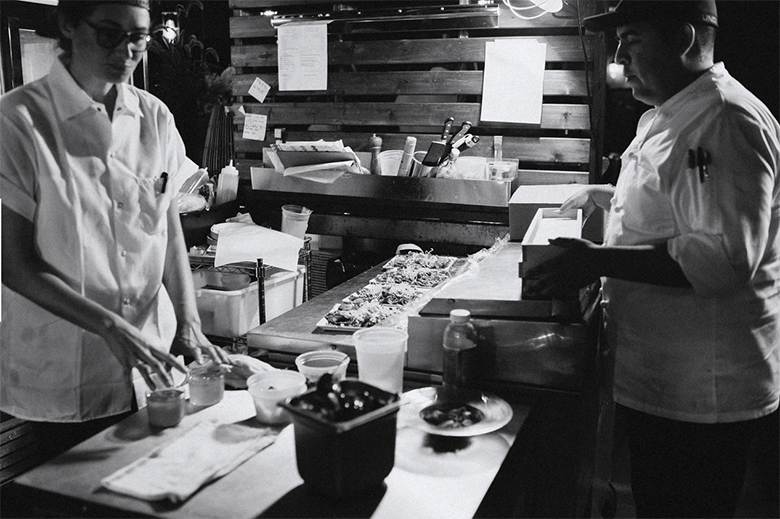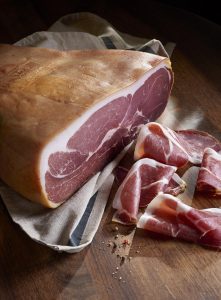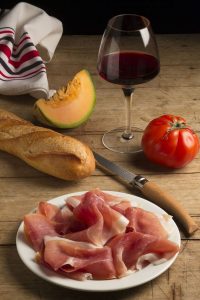
![]()
One of Europe’s most acclaimed hams, Bayonne Ham has been served at the tables of historical figures from King Henri IV to French author Rabelais. It’s also the first French product to be awarded the Protected Geographical Indication (PGI) in 1998.
The European Union created this “seal of guarantee and recognition” in 1992 as a sign of quality and origin with the aim of guaranteeing the origin of products from regions of history and tradition.

It’s the result of a thousand years of tradition and know-how, valuing and respecting the product in all its production process. For Bayonne Ham in particular, the PGI status means two things: Pigs must have been born and bred in Southwest France, and curing must take place within the Adour river basin.
Above and beyond those PGI qualifiers, Bayonne Ham is produced following a painstaking eight-step traditional method—from the arrival of fresh pig legs to the branding of the Bayonne Ham “Lauburu” cross. Each one of these steps is essential to delivering a high-quality product for which Bayonne Ham upholds full transparency of process.
- Arrival of the legs: Producers of Bayonne Ham receive fresh legs from authorized slaughterhouses.
- Salting: Fresh hams are rubbed with salt from Salies de-Béarn salty spring water. They are then covered with a thick layer of salt and placed in salting rooms.
- Resting: Hams are suspended in a room where they are dried at low temperature in artificially created winter conditions.
- Drying: Hams are hung in drying rooms, where the long maturing process begins gradually enhancing their flavors, aromas and tenderness.
- “Pannage”: The process of applying a mixture of pork fat and flour to the ham’s muscular parts, making for a gentler drying process during the long maturing period.
- Maturing: This step allows the ham to acquire all its qualities and reveal its personality: mild flavors, balanced saltiness and delicate aromas.
- Sampling: Experts test hams and their taste at the end of the curing period. On average, it takes nine to 12 months to make a Bayonne Ham.
- The “Bayonne” seal: The process’ final step is the application of the Basque cross or “Lauburu” with a hot branding iron to all Bayonne Hams that have respected the requirements at every step of the production process.
What this means for consumers is an assurance that the product they serve is of a quality meeting the standards of no less than kings.
Photographs courtesy of Bayonne Ham.






